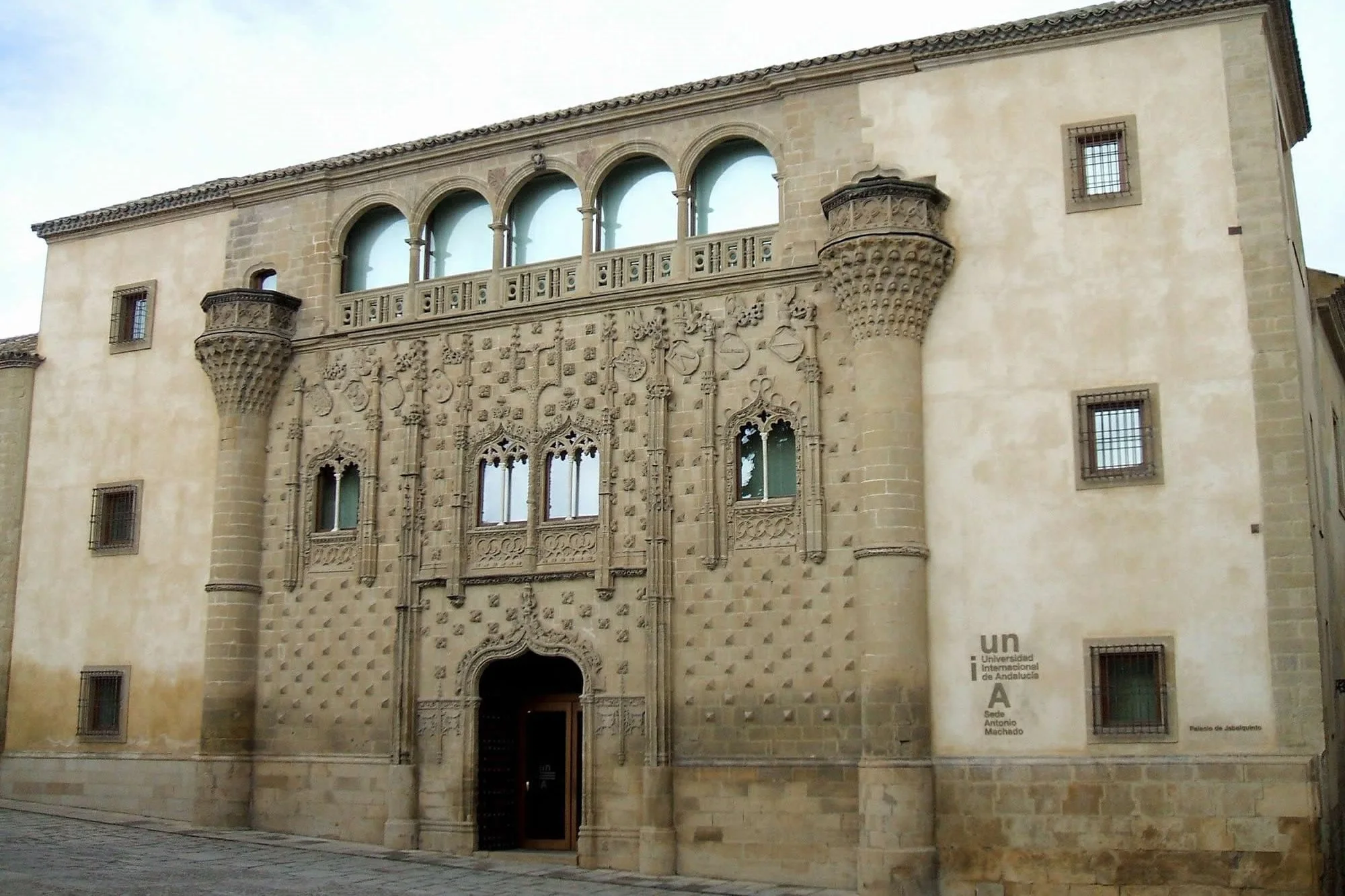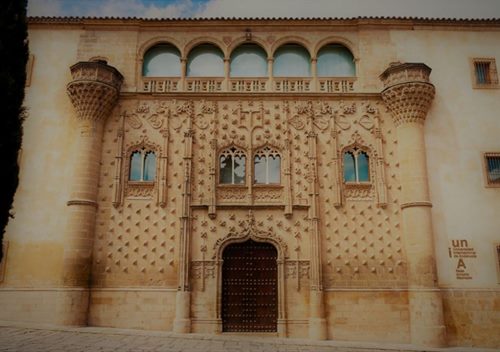
Cookie settings
We use our own and third-party cookies in order to offer our services, display videos, obtain statistics and offer personalized advertising.
For more information, please read our cookies policy.

It is one of the jewels of the Spanish Renaissance Gothic style. It was ordered by the Señor de Jabalquino, Juan Alfonso de Benavides Manrique, the king Fernando el Católico´ s first cousin once removed. Its façade is in Flamboyant style with Mudejar influences. It is framed by two cylindrical buttresses with mocarabes crowned by eaves similar to the ones of the windows.
There is a Baroque staircase covered by a semi- spherical vault. The beautiful Renaissance courtyard, with Baroque elements, has a double arcade with marble columns and coats of arms.
The door to the courtyard forms an ogee arch with two trunks that are climbed up by fourteen small human figures. In the second body, there are four windows twin to the central ones, also between pinnacles and mullioned windows with thin columns. On top, eight coats of arms “a la valona” (inclined) with helmets, crests and lambrequines (a short of ornamental drapery for the top of a window or door or the edge of a shelf). There are decorative elements such as diamonds points, foliages, flowers, knots, pinnacles, heraldry and mocarabes.
It has become headquarters of the University of Antonio Machado.
Built: XV Century
Author: Juan Guas
Style: Baroque, Renaissance, Spanish Renaissance
Category: Civil
Type: Palace
Baeza is the city of which Antonio Machado wrote ‘Campo de Baeza, I'll dream of you when I don't see you’. With this guided tour you will understand why the illustrious poet expressed his longing for Baeza, a city declared a World Heritage Site together with Úbeda, thanks to its great monumental and historical heritage of its splendid Andalusian Renaissance.
Cobbled streets, a Cathedral of Romanesque origin and later transformed into Renaissance, palaces with beautiful ‘altarpiece-doors’ in honour of the nobles who lived there. It will seem as if you are walking through a Castilian city but in the middle of the olive groves of Jaén. You will also be able to taste the local olive grove's ‘green gold’. A perfect visit to get to know the culture and tradition of Baeza to the full.
Address and telephone
Opening times
From 10:00 a.m. to 2:00 p.m. and from 4:00 p.m. to 6:00 p.m.
If you see any mistakes or want to add anything to this information, please contact us.

Baeza is the city of which Antonio Machado wrote ‘Campo de Baeza, I'll dream of you when I don't see you’. With this guided tour you will understand why the illustrious poet expressed his longing for Baeza, a city declared a World Heritage Site together with Úbeda, thanks to its great monumental and historical heritage of its splendid Andalusian Renaissance.
Cobbled streets, a Cathedral of Romanesque origin and later transformed into Renaissance, palaces with beautiful ‘altarpiece-doors’ in honour of the nobles who lived there. It will seem as if you are walking through a Castilian city but in the middle of the olive groves of Jaén. You will also be able to taste the local olive grove's ‘green gold’. A perfect visit to get to know the culture and tradition of Baeza to the full.